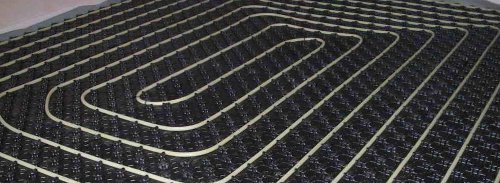
Heated Flooring Options: 5 Things to Look For
Average Rating
Rate This Article
Most Popular Flooring Cities
Related Articles
Flooring: A Quick Look Flooring Costs Area Rugs vs Carpeting Laminate Flooring Flooring Trim The Future of Flooring Linoleum Flooring Solid Hardwood vs. Engineered Hardwood Flooring Tile Flooring Vinyl FlooringIn the last 10 years, heated flooring systems have moved from a luxury niche item to a conventional standard in both new and renovated homes. The benefits are manifest- the nature of heated floors allows them to warm a room using less energy than a normal heating system, making them both greener and more economical. There are two major types of heated floors, electric and hydronic, but regardless of which system you choose, there are factors to look into to maximize your efficiency. Here are 5 questions you want your technician to answer.
WATTAGE OUTPUT
Heated floor systems are rated based on their wattage per square foot. The rate at which a room will be heated is partially dependent on this (other factors will be discussed below). A higher wattage per square foot will enable to coils to heat up faster, which isn’t always needed, but is often a very nice perk. The average floor system generates 12 watts per square foot, and some systems can get as high as 15. Of course, when you are evaluating what your house needs, you have to balance the strength of the system with your economic considerations. Obviously, a unit that generates more heat will consume more energy, costing you more. So the important thing is to decide on a balance that works for both your body and your budget.
EASE OF INSTALLATION
Not all flooring projects are equal. If you are building a new home, it is relatively simple to construct it with heated floors. The tricky part is if you are attempting to retrofit your existing house, condo or apartment with heated floors. Electric heating, with its series of wires and heating coils, tends to be easier than hydronic heating, which of course involves adding another moving part- water- into the mix. In both cases you will have to rip up the floor and lay down the system, but hydronic involves more plumbing. Of course, you can always contact a qualified plumber to help you, if you decide that the benefits of hydronic systems outweigh the problems.
FLOOR TYPE
This is an easy one to overlook. You are staring at your floor, wishing it were warmer, and make the decision to install heated floors. But people often forget that no system exists in isolation, and that your floor will both affect and be affected by the heat underneath. Wooden floors are the best type for helping to distribute heat around the room, while heavier flooring material, such as tile, slate, marble or concrete, absorb and block more of the warmth (though not all, or even a lot- heated floor systems work with these materials). Additionally, the heat itself will cause the material, whether wood or otherwise, to expand and contract, which could hurt its longevity if not treated beforehand. When building a house, make sure you account for this.
HEAT TRANSFER
There is a scary-sounding term called “parasitic heat transfer”, which sounds like it could be out of The Thing, but is really a common phenomenon. Basically, when you have either heating pipes or wires under your floors, the heat can transfer itself into other areas, such as refrigeration, air conditioning ducts or cold-water pipes. Now, you probably won’t be using your AC at the same time as your heated floors, but you still want to make sure these units aren’t damaged or otherwise corrupted. You will have to make sure that they are well-insulated, and plan your space accordingly. A certified electrician can help you work around heat parasites.
WARRANTY
The idea of ambient, underfloor heat has been around for thousands of years. There is evidence that areas in China and Korea ran heated water underneath their floors as far back as 5000 years ago. So this is an idea with some pedigree. Its longevity, of course, doesn’t ensure its permanence, and modern systems, while more efficient than ancient Korean ones, also come with more maintenance issues. It is vitally important to get a good, multi-year warranty that covers a whole range of issues. If there is something wrong with, say, a cabinet that you had installed, it is an easy to fix it yourself. But often a heated flooring issue necessitates tearing up portions of your floor until you fix it. So you want to make sure that you aren’t doing it alone, and aren’t paying for everything.
So there are a few factors you can take into consideration when shopping for heated flooring. If done right, and installed correctly, a heated flooring system can provide you and your family a cheaper, more environmentally-friendly way to warm your home (as well as the physical and psychological benefits that come with not having to step on a cold floor when getting out of the shower). And remember that you don’t have to do this project on your own, as expert flooring contractors are becoming very familiar with this next wave in home heating.--Mitch Logan





